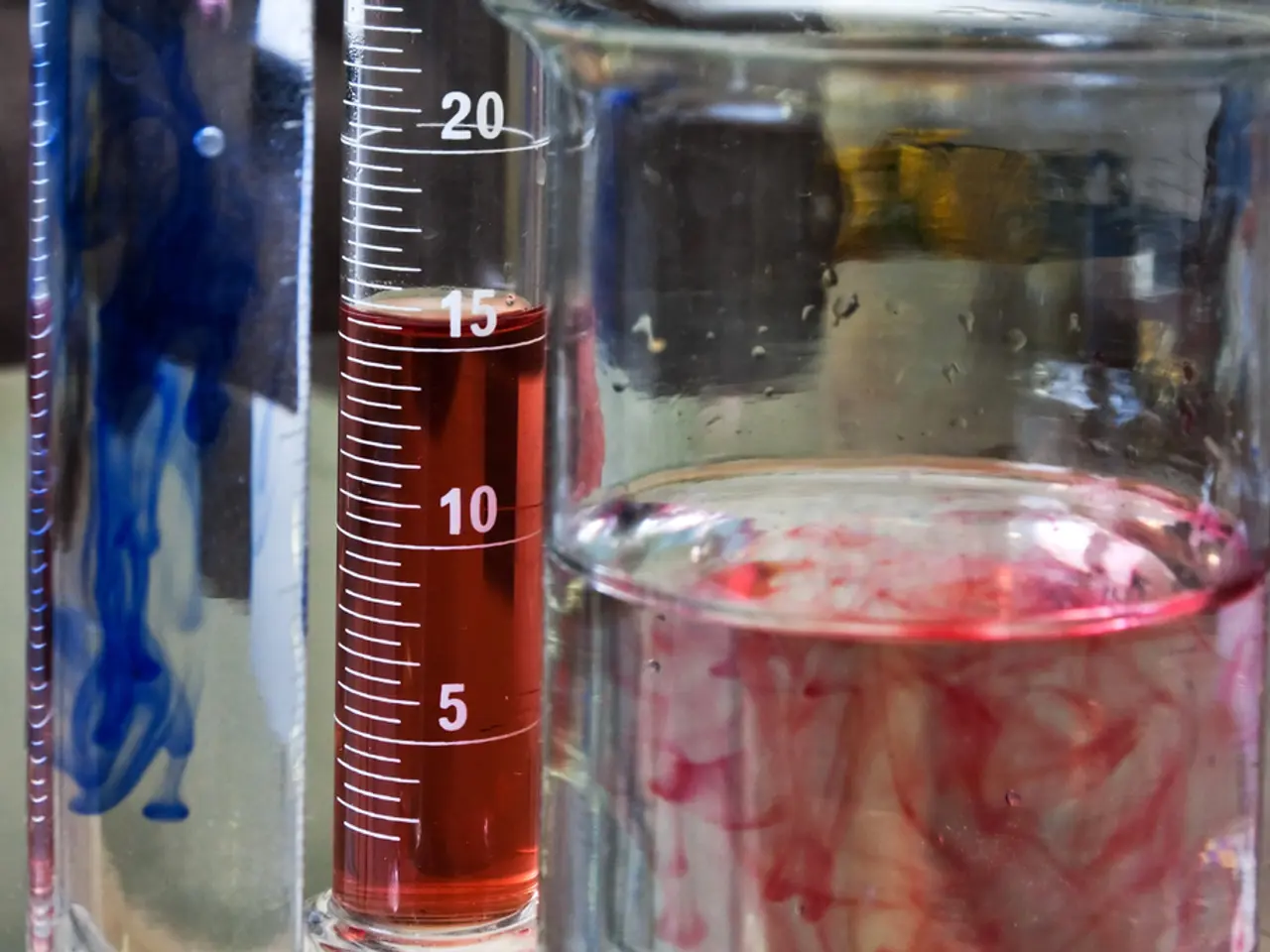Water's Journey Through Barriers: Transfers Across Cellular Walls
In the microscopic world, a fundamental force called osmosis plays a crucial role in shaping cells. This natural phenomenon, driven by the movement of water molecules, has a significant impact on cell behavior, such as swelling, shrinking, or maintaining volume.
- Solute Concentration Gradient
Osmosis occurs when water moves from an area of lower solute concentration to an area of higher solute concentration across a semipermeable membrane. This movement can cause cells to either swell or shrink, depending on the tonicity of their environment.
- In hypotonic environments (lower solute concentration outside the cell), water rushes in, causing cells to swell or become turgid, especially in plant cells.
- In hypertonic environments (higher solute concentration outside), water moves out, resulting in shrinkage or plasmolysis in plant cells, and potential bursting in animal cells lacking a cell wall.
- Isotonic environments (equal solute concentration) maintain cell size, allowing for normal function.
- Osmotic Pressure
Osmotic pressure is the pressure needed to stop the flow of solvent through the membrane. It depends on the solute concentration difference and governs the amount of water that will move to balance concentrations. In biological contexts, osmotic pressure influences nutrient uptake and fluid balance.
- Cell Type and Structure
- Plant cells, with their rigid cell walls, can withstand turgidity in hypotonic environments, maintaining plant rigidity. In hypertonic environments, they undergo plasmolysis, with the cell membrane pulling away from the cell wall.
- Animal cells, without a cell wall, are more vulnerable. In hypotonic solutions, water influx can cause them to burst (lysis). They best maintain function in isotonic solutions to avoid swelling or shrinking.
- Environmental and Biological Factors
Experimental conditions such as the type of organism or tissue, and external environmental variables, can affect osmosis rates and extent.
In essence, osmosis is driven primarily by solute concentration differences and osmotic pressure across semipermeable membranes. This movement of water causes cells to either swell or shrink, with cell structure mediating the extent and consequences of such changes.
- Membranes act like bouncers at a club, deciding who gets in and who stays out in the realm of osmosis.
- In hypotonic solutions, water molecules rush in, causing plant cells to swell up and become turgid.
- Semipermeable membranes allow water molecules to pass through while blocking larger molecules.
- The concentration of solutes determines how water moves in or out of a cell.
- Semipermeable membranes can be hypertonic (strict bouncers), hypotonic (easygoing bouncers), or isotonic (fair bouncers).
- Osmosis begins at semipermeable membranes.
- Osmotic pressure affects cells in different ways: plant cells become firm and turgid, while animal cells can shrink or burst depending on the tonicity of the solution.
- Hypotonic solutions have a low solute concentration, causing water to move in.
- Osmotic pressure is the force created by the difference in water potential (concentration) between two solutions.
- Pure water is an isotonic solution.
- The concentration gradient is the difference in the number of molecules of a substance between two areas and drives osmosis.
- In hypertonic solutions, water molecules rush out of plant cells, causing plasmolysis and cell shrinkage.
- Hypertonic solutions have a high solute concentration, causing water to move out of cells.
- Solutions are like a crowd of solutes (like sugar or salt) hanging out in a solvent (like water).
- Isotonic solutions, like Goldilocks's porridge, keep cells perfectly balanced.
- A swimming pool filled with water becomes salty when salt is added, creating a hypertonic solution.
- Hypertonic solutions suck water out of cells, making them shrivel up like thirsty plants.
- Tonicity refers to how a solution affects a cell's water content.
- Mental-Health and Fitness-and-Exercise can have a profound influence on overall health-and-wellness, and Science continues to explore the interconnected relationship between them. For instance, regular exercise has been found to help boost mood and reduce symptoms of anxiety and depression, as well as improve brain function and cognitive abilities.
- Nutrition plays an essential role in both mental-health and physical-health. A balanced diet rich in a variety of whole foods provides the necessary nutrients for sustained energy levels, disease prevention, and overall well-being. Balancing diet and fitness can lead to long-term health benefits, while neglecting either can lead to a plethora of health issues, including poor mental health, obesity, and chronic diseases.




